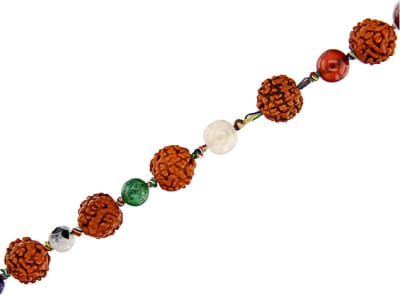Rudraksha Seeds are used as prayer beads in Hinduism. Rudraksha is loosely translated from Sanskrit as "Lord Rudra's teardrops". The bead comes from the dried stonefruit of the Elaeocarpus ganitrus tree. It is said that after Shiva meditated on the welfare of mankind for 1,000 years a tear fell to the earth and formed a Rudraksha tree. The beads have 1 or several faces called mukhi that are demarcated by clefts and furrows. The beads can have between 1 and 21 faces. Beads are strung on a string of prayer beads called a mala. Most malas contain 108 rudraksha seeds and 1 extra bead called a bindu. A mala should not contain less than 84 rudraksha seeds.
General Information
Rudraksha Seed Colors
-
 Black
Black -
 Blue
Blue -
 Brown
Brown -
 Orange
Orange -
 Red
Red -
 White
White -
 Yellow
Yellow
Countries of Origin
Unknown; China; United States of America; Guam; Malaysia; Australia; Taiwan (Province of China); Nepal; India; Indonesia
Care
Avoid harsh chemicals, heat and ultrasonic cleaners.
More About Rudraksha Seed
The Ek Mukhi Rudraksha seed only has 1 face or mukhi. It is considered very powerful, and malas made up of these seeds are said to make the wearer desire solitude. Panchmukhi Rudraksha have 5 faces and promote general wellbeing. Gauri Shankar Rudraksha beads are said to bring prosperity by balancing the duality of the masculine and feminine aspects of an individual.

